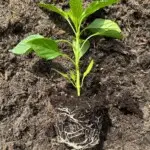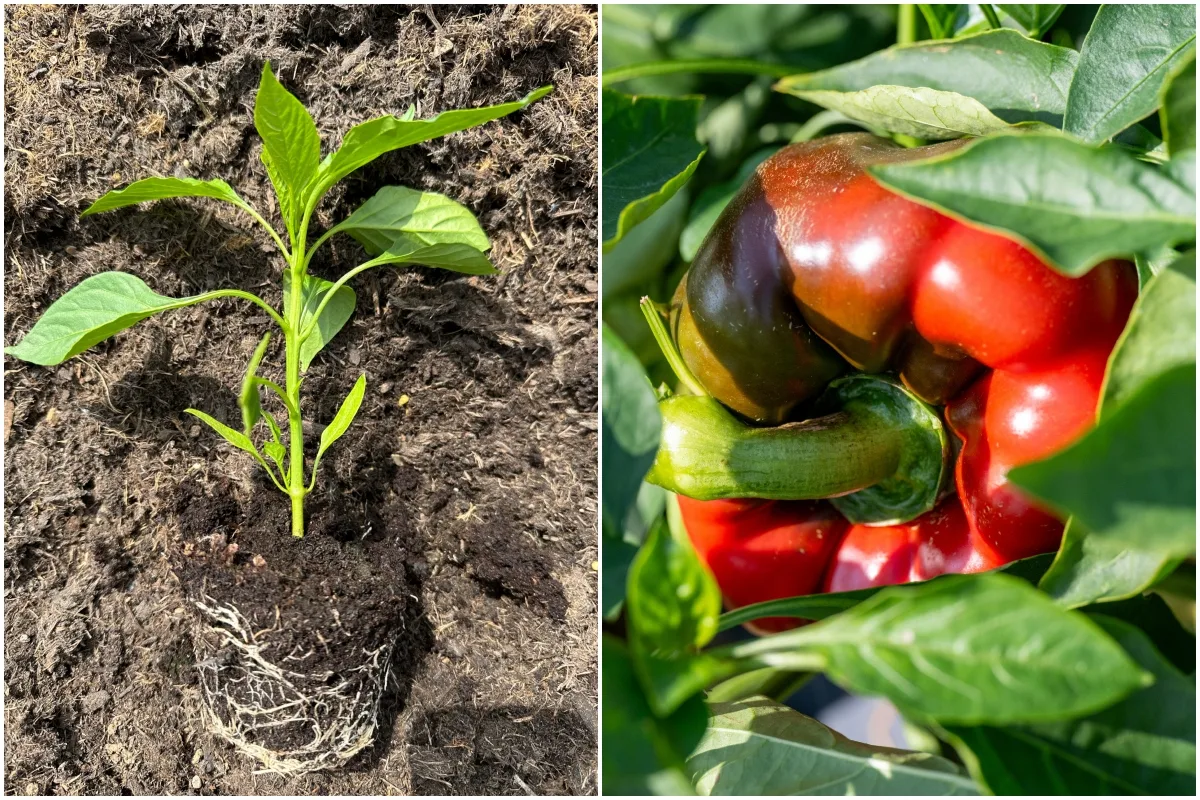
Pepper plants thrive in my hot, subtropical climate. They flourish and provide tons of delicious peppers year-round. But last fall, I made a tragic mistake. I surrounded the poor things with lots of plants that shouldn’t grow near peppers.
Pepper plants (Capsicum annuum) are perennial. You might not know that if you live in a temperate region. But here in Zone 10, it becomes obvious to any gardener.
They don’t die off completely unless we get a rare freeze. They’ll bloom and fruit throughout the winter. If it gets really cold, they go dormant and start growing again in the spring.
So, I leave my pepper plants in the ground because our winter weather is mild. I do cover them when frost is in the forecast. But I’ve never bothered to lift and overwinter them indoors like other gardeners do.
What Happened to My Pepper Plants?
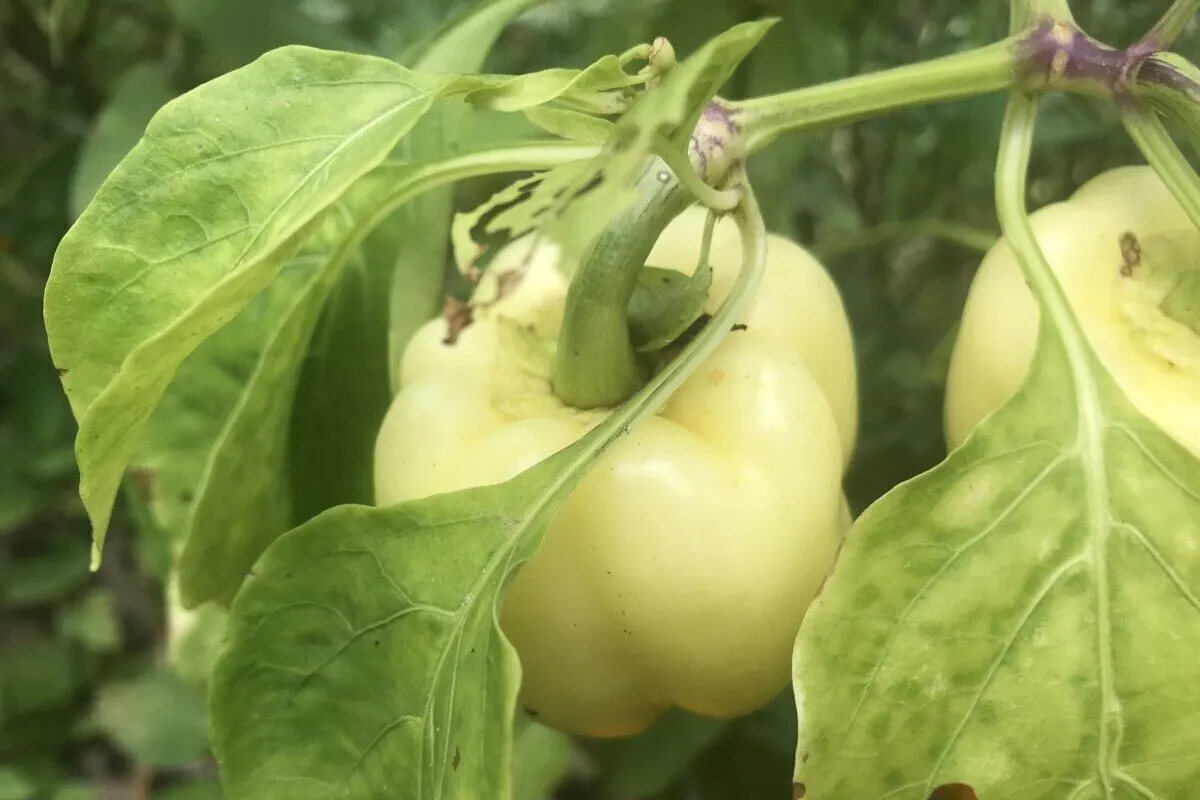
It seems my confusion about the lifespan of peppers led to a serious gardening blunder. Last fall, I left them in place as usual and planted my winter vegetables around them.
Despite plenty of rainfall and temperatures in the 80s, my pepper plants began to shrivel even before they could fruit.
When they did fruit, they fell over, too weak to hold themselves up any longer. The peppers they produced were tiny and deformed.
Careful What You Plant Where
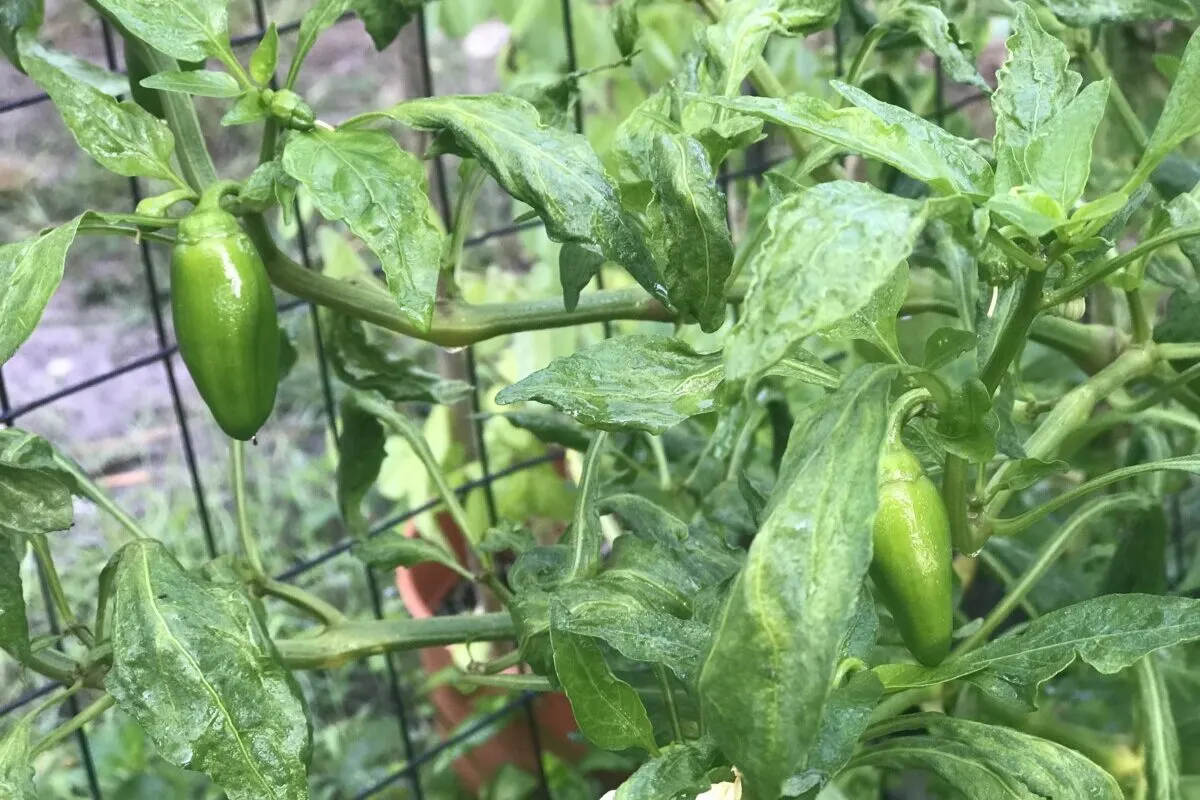
If you love to grow peppers, either sweet or hot, there are plants you need to avoid.
In my case, most of my winter vegetables are a pepper plant’s worst enemy.
In a nutshell, some plants are “allelopathic.” This means they release chemicals from their roots, stems or leaves that impact nearby plants. They can stunt their growth or negatively affect their productivity.
Other plants release certain chemicals from their roots that only damage specific plants or plant families. These Capsicum enemies are plants that shouldn’t grow near peppers.
Likewise, some plants are badly affected by peppers. You’ll want to avoid placing your peppers anywhere near them.
1. Sunflowers (Helianthus annuus)
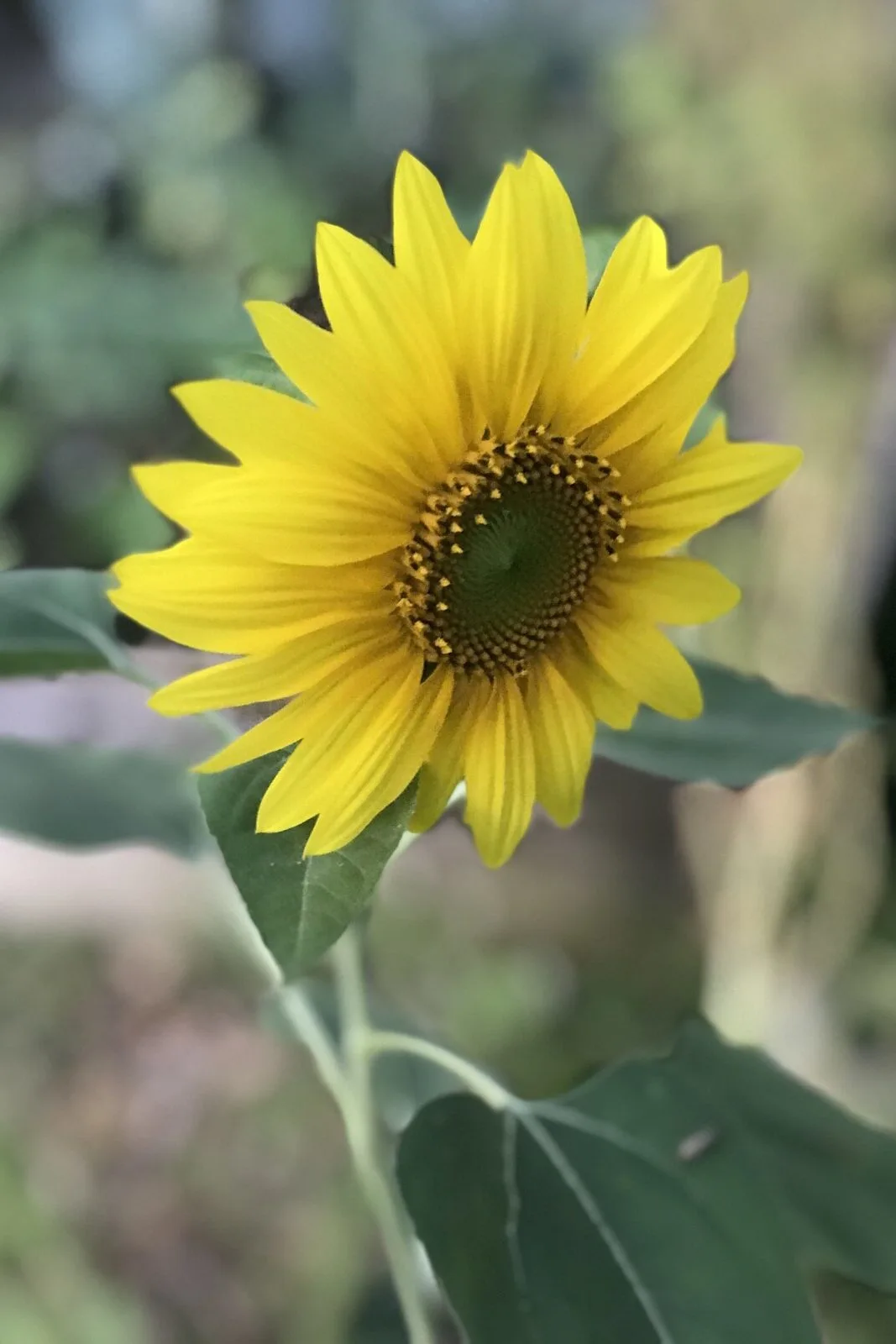
Sunflowers attract pollinators, but they can also release “allelochemicals” from their roots, inhibiting seed germination and stunting the growth of other plants.
This includes peppers, which suffer from poor root development when planted too close to sunflowers.
You can plant them 8 to 10 feet away in their own patch to enjoy their insect management benefits while avoiding their downsides.
2. Goldenrod (Solidago spp.)
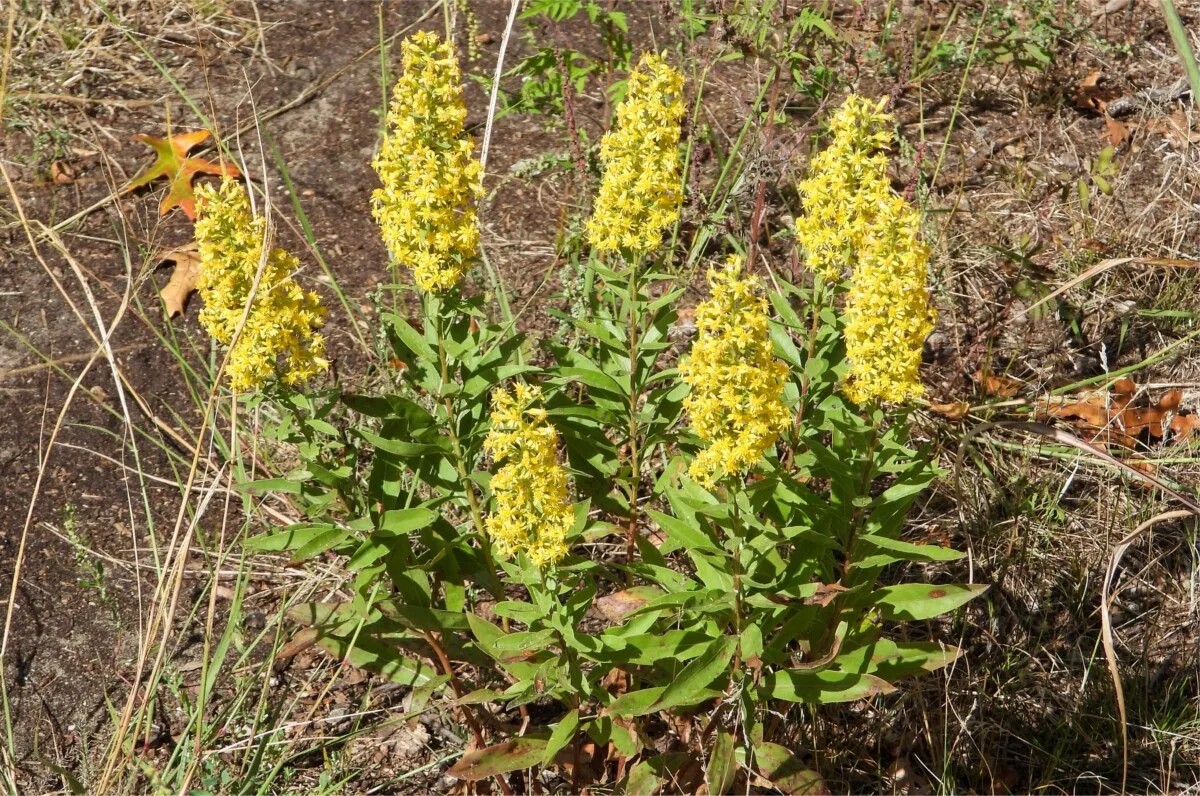
Goldenrod is another flowering plant that brings in all the bees and butterflies. Unfortunately, its roots produce chemicals that harm some vegetable garden plants.
In this case, relegate them to a wild corner of your garden so they can continue to benefit nature without impacting your pepper harvest.
3. Lavender (Lavandula spp.)
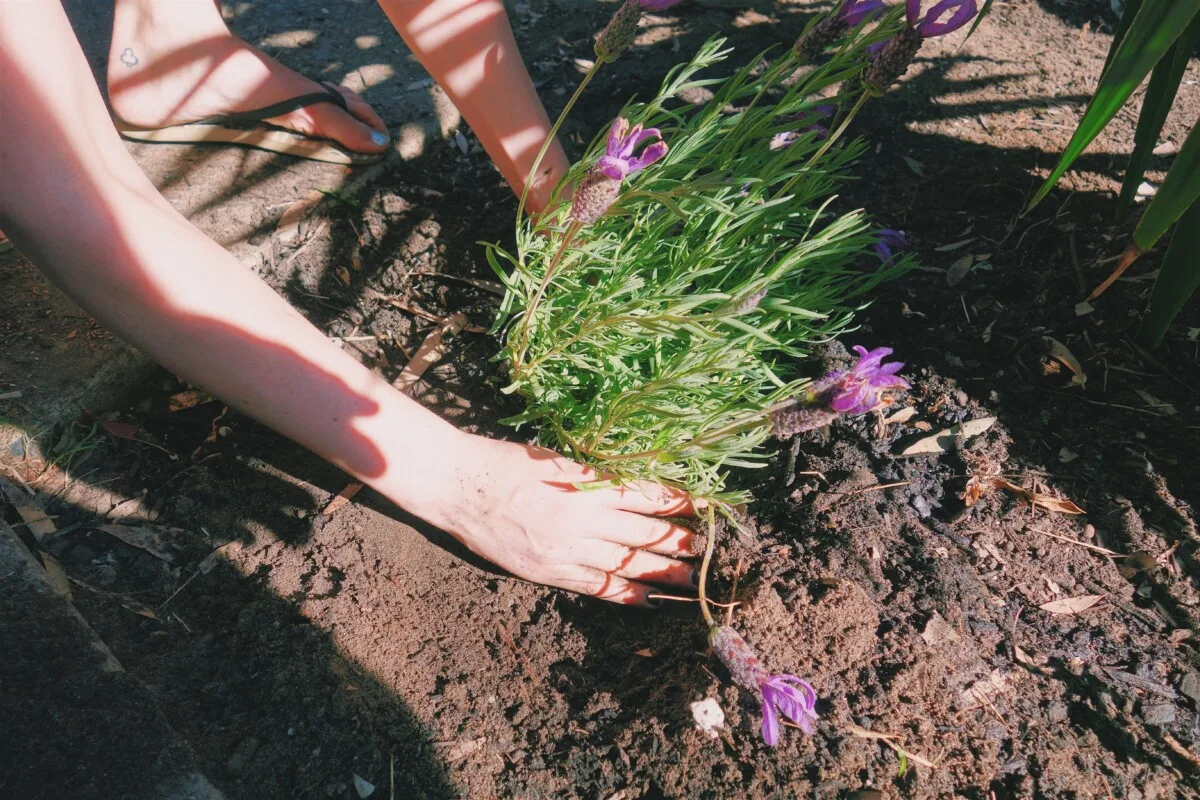
Lavender is a surprising addition to this group. However, it produces the allelochemical coumarin, which inhibits the growth of nearby plants.
It’s not clear if it’s specifically dangerous for pepper plants, but experiments proving that lavender extract works as a weedkiller is enough to convince me.
4. Fennel (Foeniculum vulgare)
Fennel has no friends in the garden. It releases “phenols” into the soil, which stunts the growth of other plants. But our editor, Tracey, thinks you should grow it anyway, read here to learn how to do it without ruining other nearby veggies.
Nightshade plants (like peppers and tomatoes) and legumes (beans and peas) are particularly vulnerable.
5. Strawberries (Fragaria × ananassa)
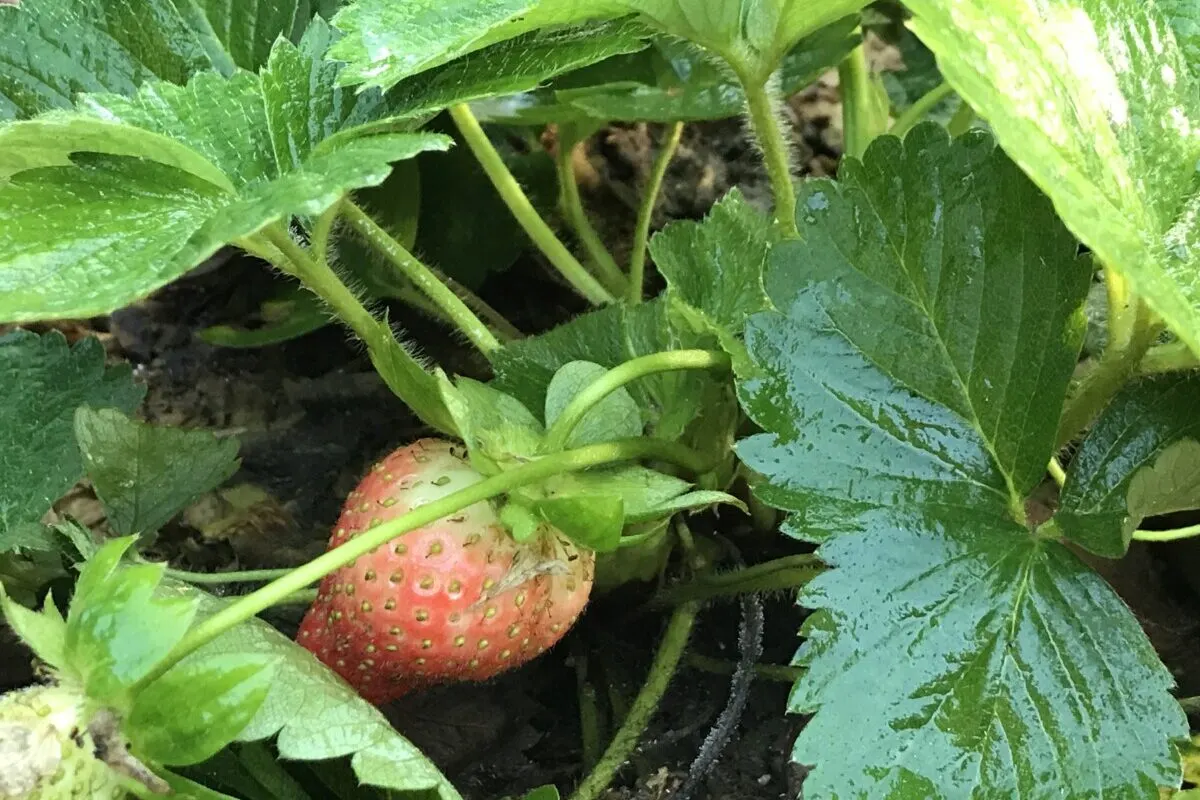
Where strawberry plants are grown as perennials, a fungal disease called anthracnose can linger in the soil. The spores can build up, affecting both peppers and berry plants.
It spreads very quickly, and will also affect corn, cucumbers, and tomatoes.
Why risk both crops to save a little space? Plant them far apart in your garden.
6. Potatoes (Solanum tuberosum)
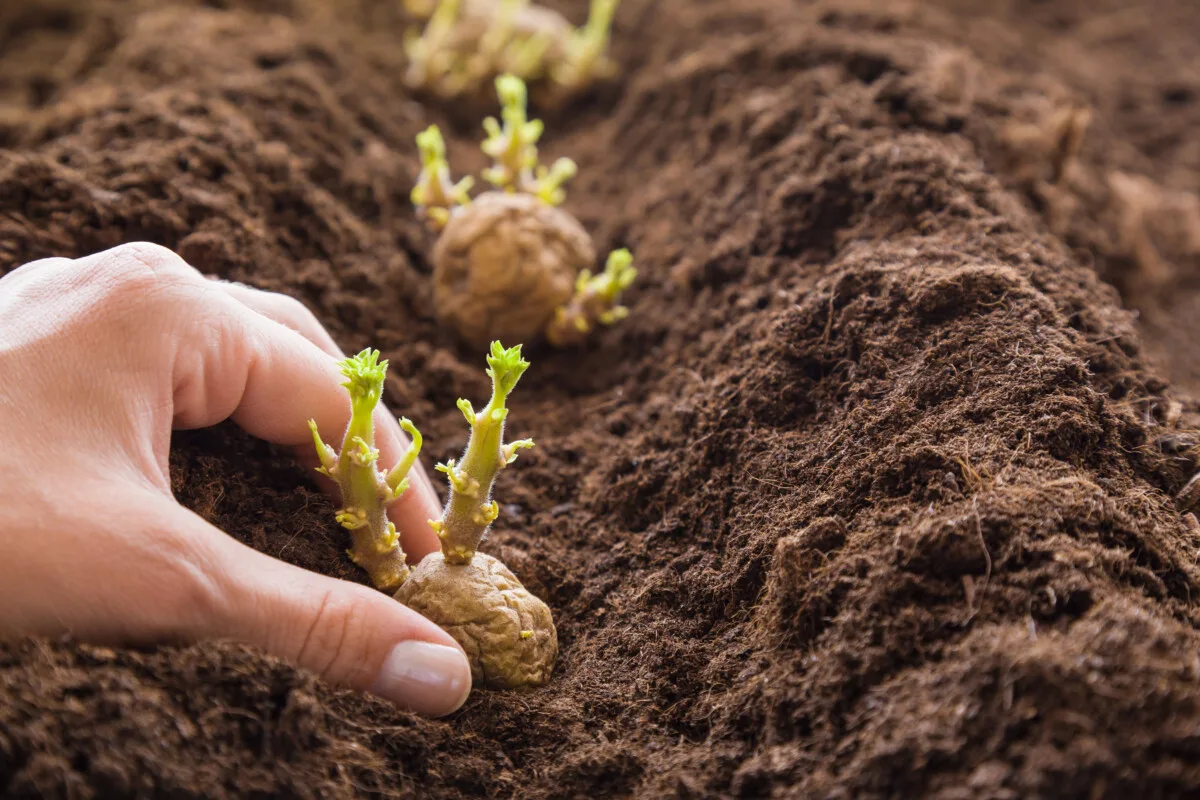
White potatoes (sometimes called Irish potatoes) are in the same plant family as pepper plants. This means they will compete for the same nutrients while attracting the same pests. They’re also vulnerable to the same diseases.
While you can carefully plant peppers with cousins like tomatoes if you give them enough room, potatoes are different. That’s because, in three or four months, you’ll need to dig up the whole garden bed to harvest your spuds. Just when your pepper plants are starting to take off.
Do you really want to risk damaging their delicate roots?
7. Black Walnut (Juglans nigra)
Black Walnut is another one of those plants that are a danger to peppers. The leaves, nut hulls and roots produce juglone, which impacts most of the plants around the tree.
It’s particularly bad for nightshades, and results in poor root growth, yellowing, and wilting.
8. Brassicas (Brassica oleracea)
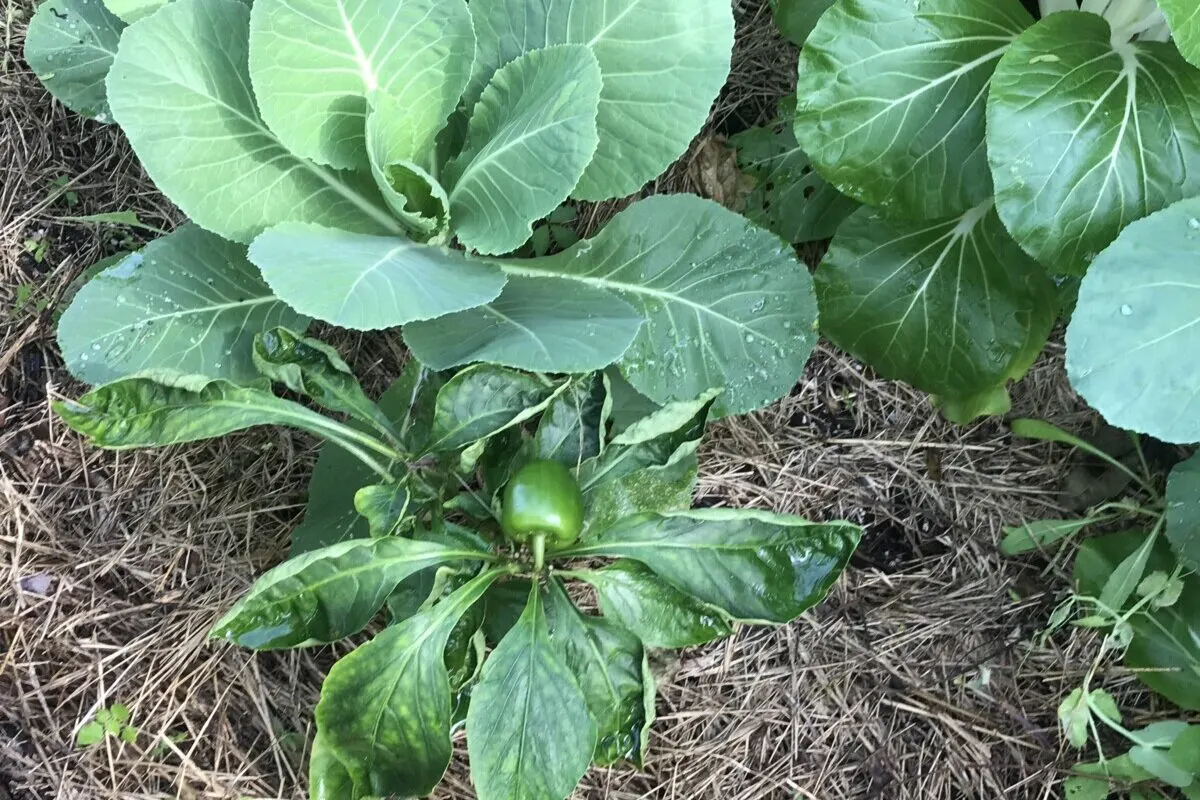
Next on the list is my pepper plants’ primary nemesis — brassicas. This includes cabbage, broccoli, kale, cauliflower, kohlrabi, and mustard greens.
Brassicas produce glucosinolates and release them when leaves and roots decompose in the soil. While they’re a healthy part of the human diet, they aren’t good for the health of other plants.
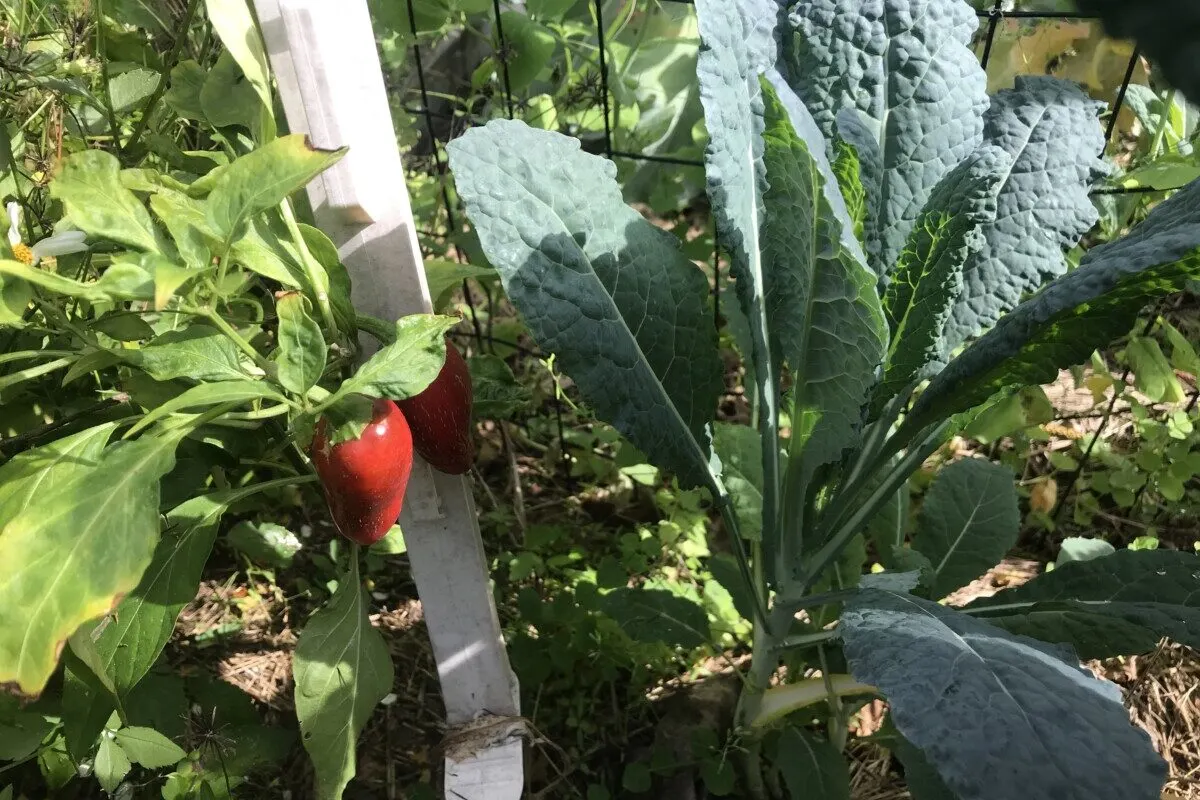
One of the latest trends in sustainable farming is planting mustard as a winter cover crop to prevent weed seeds from germinating in the spring.
These cruciferous vegetables grow fast in the cooler months, even with shorter daylight hours. They can easily out-compete pepper plants, which are at their most vulnerable, bullying them for sunlight and stealing their nutrients.
9. Stone Fruit Trees (Prunus spp.)
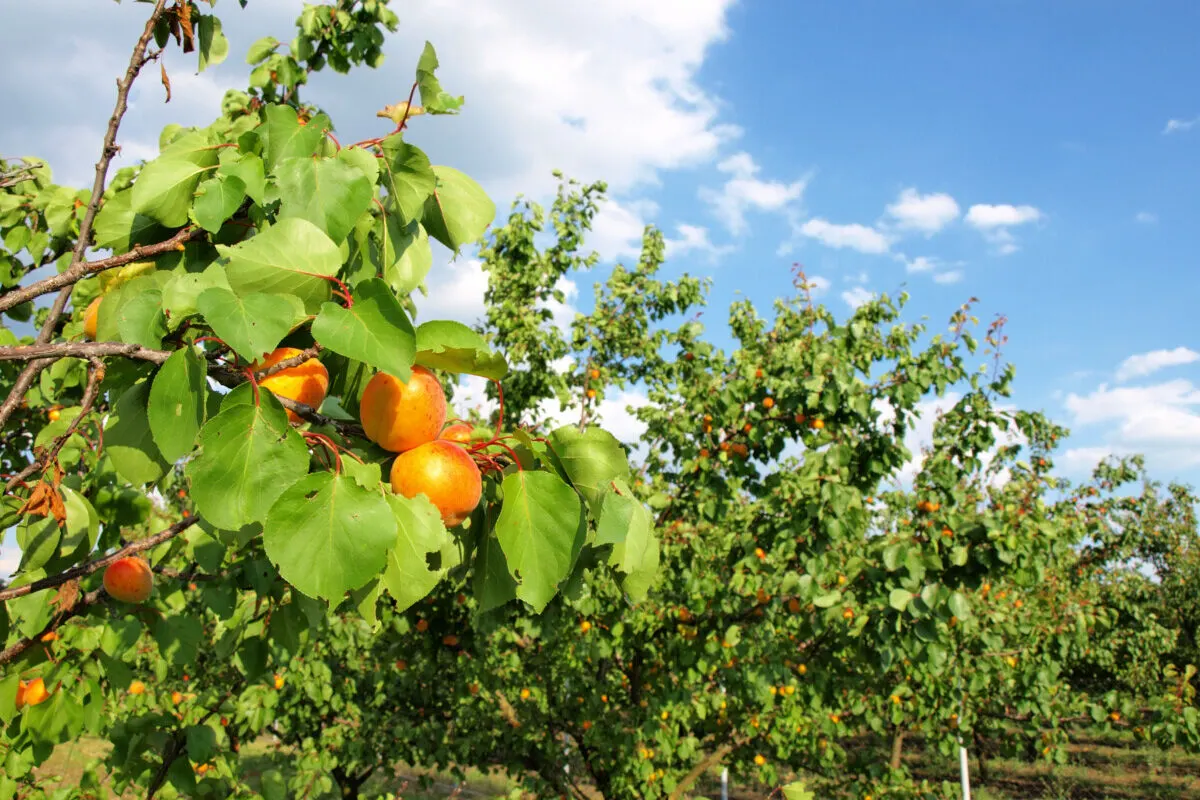
While the previous plants are bad for growing pepper plants, your pepper plants are bad for stone fruit trees. Apricots, nectarines, and plums are particularly vulnerable to bacterial leaf spot. Your peppers can spread it to your fruit trees.
It’s annoying to lose a year’s harvest of fresh peppers, for sure. However, it’s devastating to lose a 5-year-old fruit tree. Bacterial spot can leave your fruit trees vulnerable to other diseases and make them more attractive to insects.
These infestations can result in a fatal downward spiral that affects their overall hardiness when winter hits.
10. Eggplant (Solanum melongena)
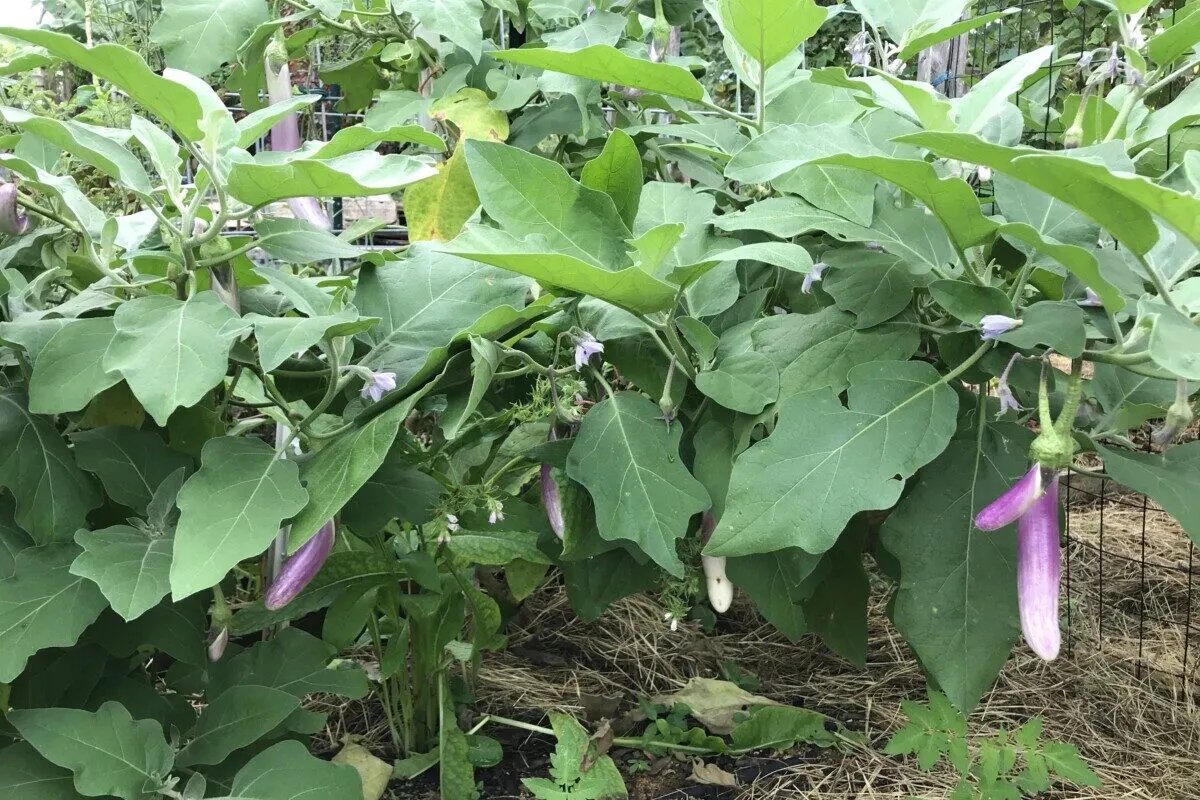
While you can safely plant your peppers near other nightshade plants like tomatoes and eggplants, researchers found that aphids prefer eggplant over peppers, so planting them together is not ideal.
Adding other trap crops that lure aphids away from both plants is one tactic for getting a good harvest. Some flower and herb plants draw aphids in and deter them from eating your vegetable plants.
Let’s take a look at a few of those companion plants.
Good Companion Plants for Peppers
Companion planting is a great strategy for managing pests in the garden and improving the quality of your garden soil.
Growing companion plants can deter or confuse pests. They will also draw in pollinators. In the last 10 to 20 years, scientists have discovered many beneficial companion plants that can help your vegetable plants absorb more nutrients.
You can interplant these beneficials between your peppers or use them as a border around the garden bed.
1. Basil (Ocimum basilicum)
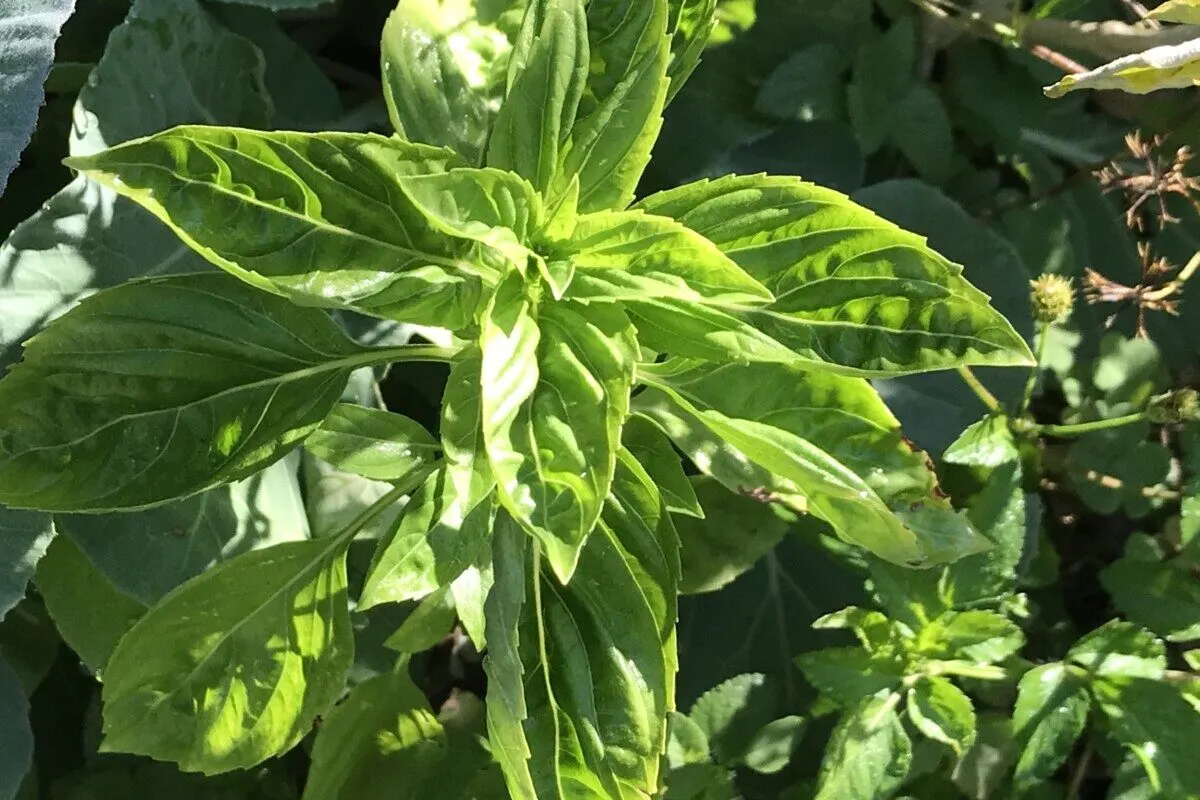
Basil is a popular companion plant for both tomatoes and peppers. This sweet-smelling herb works as a repellent against thrips and aphids due to its linalool content.
2. Rosemary (Rosmarinus officinalis)
Similar to basil, the strong-smelling aromatic oils in this culinary herb repels insects when planted close to pepper plants. Plant them about 1.5 feet away from your peppers for the best results.
In addition, they’ll provide shade to protect your peppers from sunscald.
3. Alliums
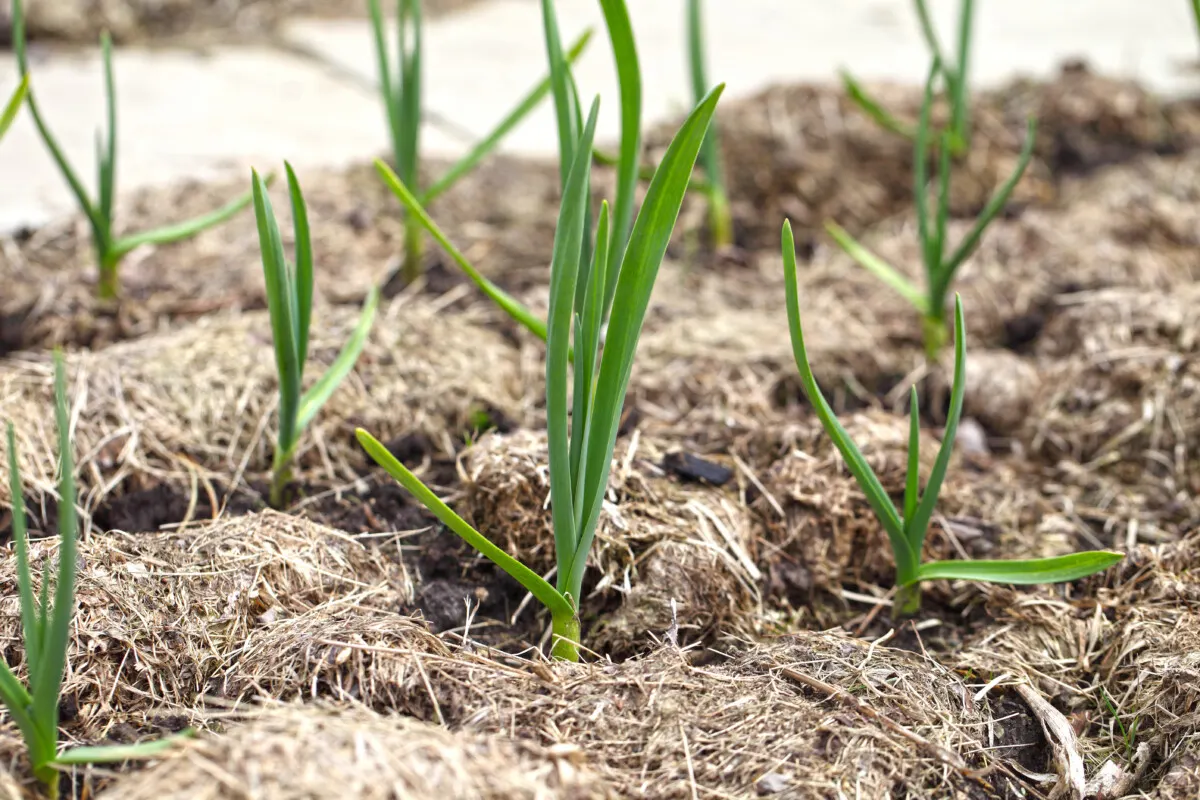
Alliums, such as garlic, onions and chives, repel insects by masking the odor of more desirable plants. They release sulfuric compounds that deter pests. Their flowers also attract beneficial pollinators that are the natural enemies of pest insects.
While all alliums will help protect your pepper plants from aphids, chives work best.
Garlic is also an effective allium companion plant for peppers. Growing garlic increases the enzymes that break down nitrogen and sugars in the soil. This makes it easier for pepper plants to absorb those nutrients for growth.
4. Marigolds (Tagetes spp.)
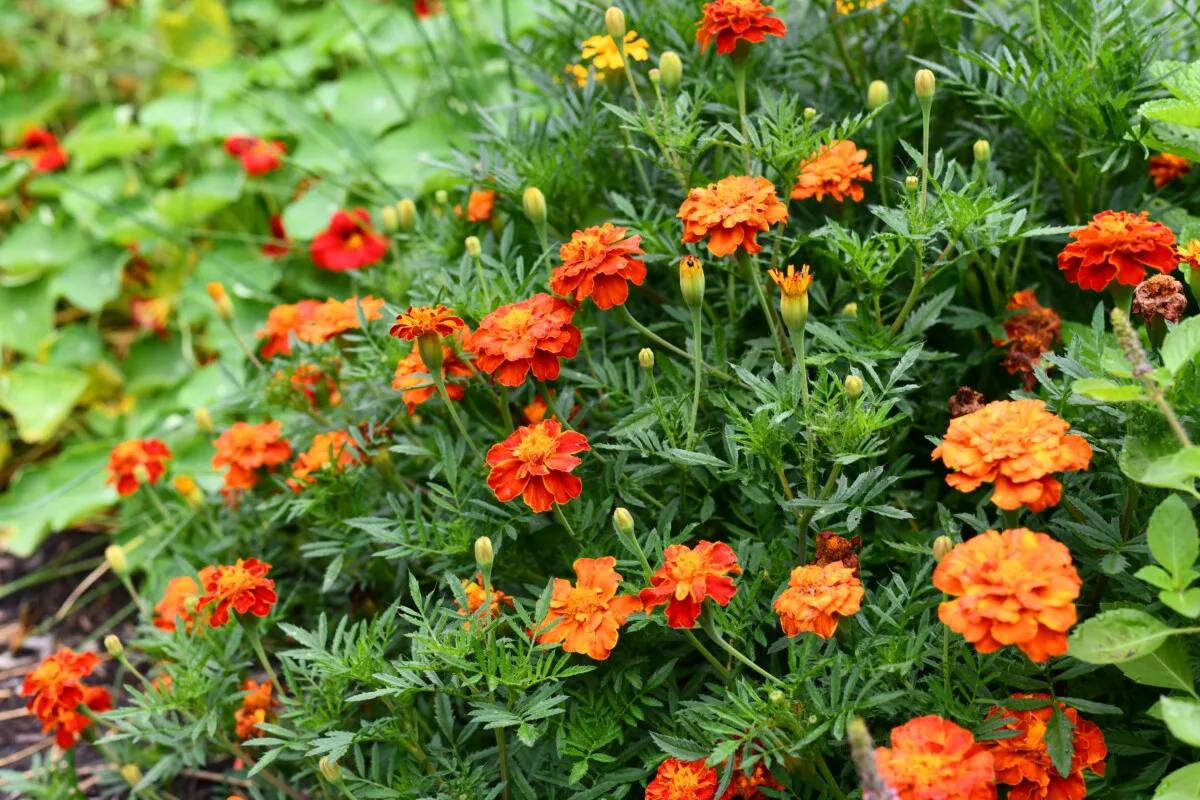
Marigolds are real workhorses in the garden. Their cheerful gold and orange flowers attract beneficial predator insects like lacewings, ladybugs, and wasps. They also draw in bees for pollination.
But it’s their effect on nematodes that make them one of the best plants to grow near peppers.
Root-knot nematodes can be a death sentence for your pepper plants. And French marigolds work as both a trap crop and a nematicide for root knot nematodes.
French marigolds attract these killers to colonize their roots, where the natural biocidal alpha-terthienyl prevents them from developing and reproducing.
Whitefly Repellent
My own garden enemy when growing peppers has been whitefly. I’ve found sprinkling the plants with ground cinnamon helps, but this becomes tedious once they’re planted in the garden.
Marigolds produce a chemical called limonene, which repels whiteflies from tomatoes.
I will certainly be planting more marigolds this year.
5. Borage (Borago officinalis)
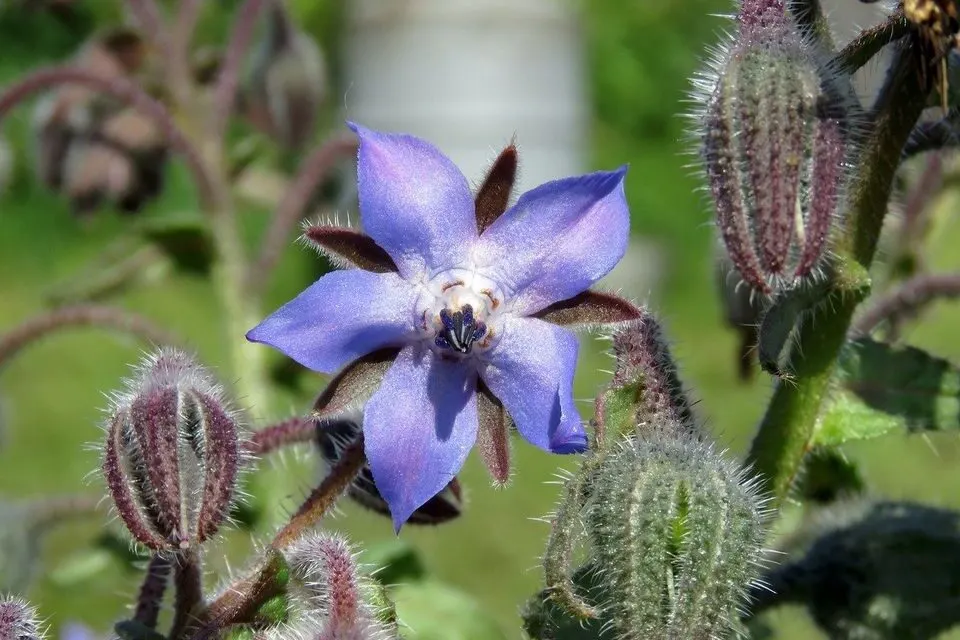
Borage is a flowering herbaceous plant known for its ability to attract bees. When planted near habanero peppers, yields increased due to the increase in pollinators.
Along with drawing in bees, borage also helps to repel the hornworms that plague many home gardeners.
6. Nasturtiums (Tropaeolum majus)
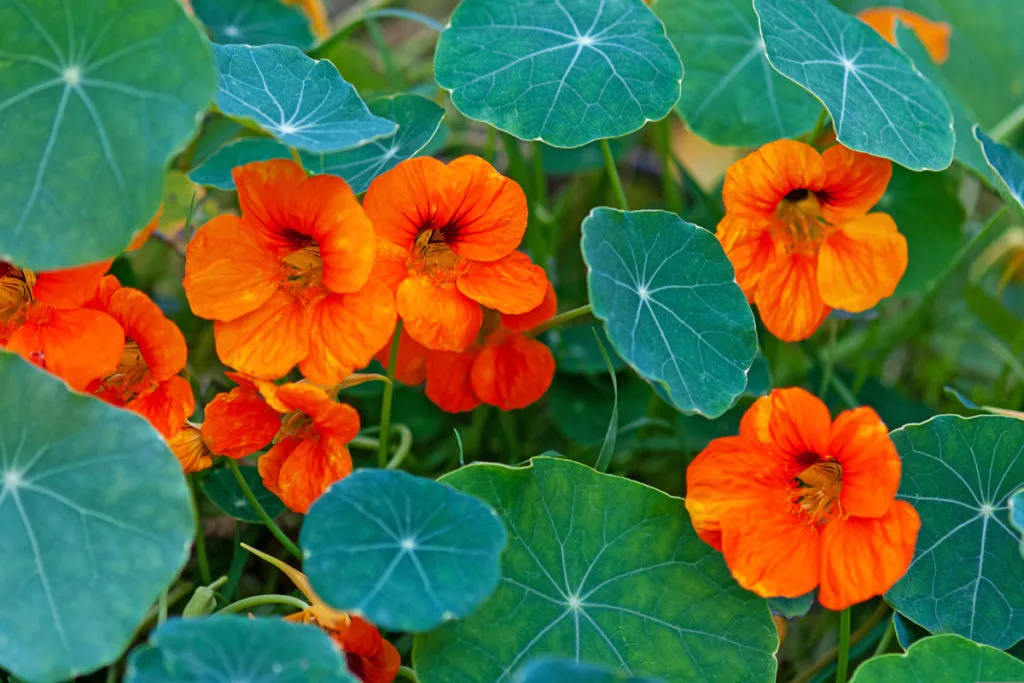
Nasturtiums also do several jobs in the garden. They work as a trap crop for aphids, cabbage worms. and whiteflies.
The vivid flowers are also edible, adding a peppery tang to salads.
7. Cilantro / Coriander (Coriandrum sativum)
Whether you call it cilantro, coriander, or both, there’s no doubt it has a unique odor. While about 10% of the population can’t bear the smell of cilantro, hoverflies seem to adore it.
These hoverflies, in turn, consume thrips, aphids, caterpillars and even corn borer bugs.
8. Oregano (Origanum vulgare)
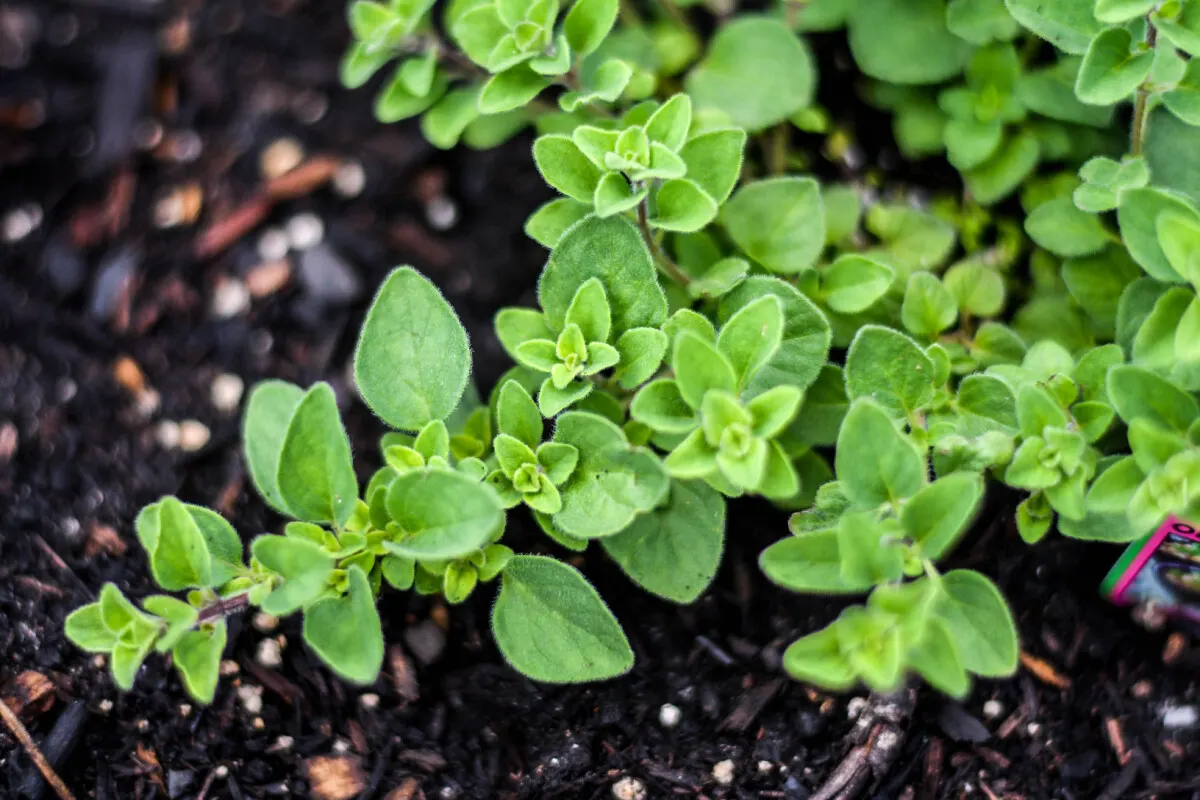
This herb makes a wonderful companion plant for peppers. It’s known for the insecticidal properties of its volatile oils.
It also seems oregano can reduce the number of plant pathogens that infect your garden soil.
When you choose low-growing creeping varieties, such as Greek oregano, you also provide a ground cover around your pepper plants. This keeps the soil cool and reduces weed pressure.
Everyone Needs a Good Friend
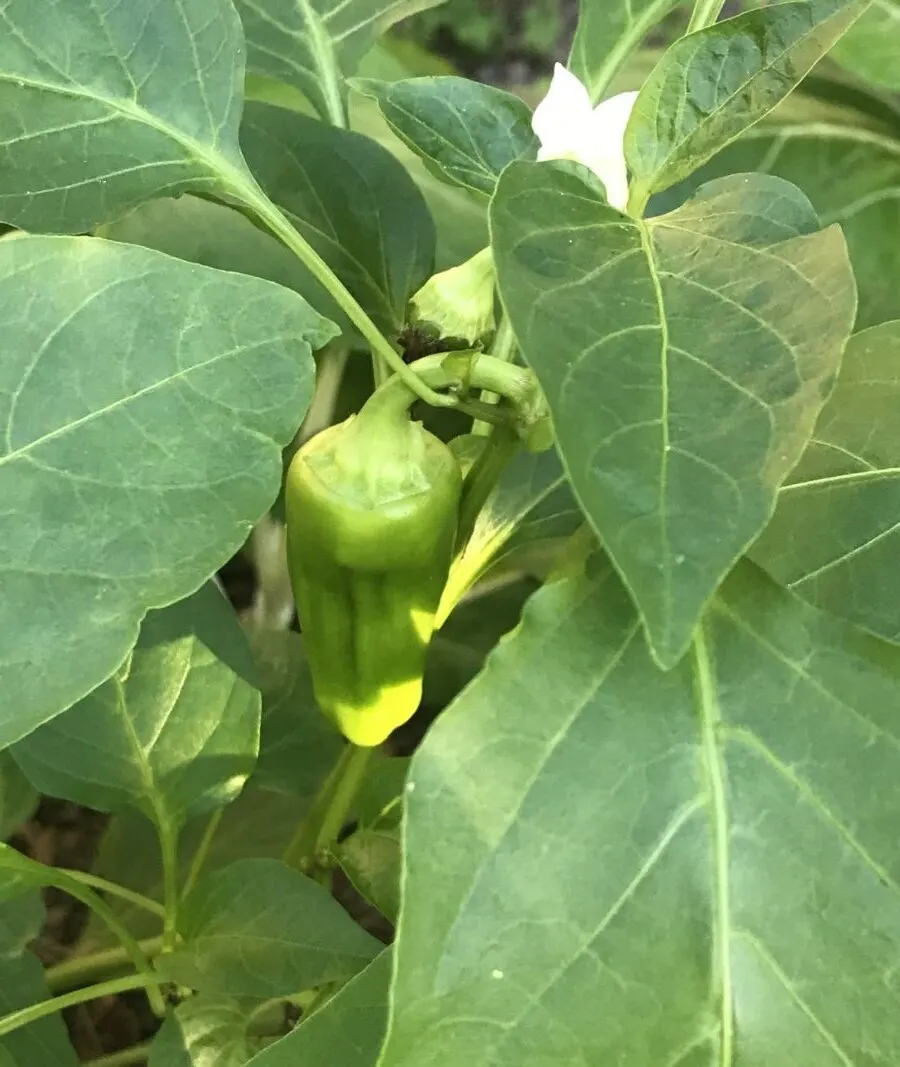
When planning your spring garden this year, avoid growing sunflowers, goldenrod and lavender too close to your pepper plants. While they draw in beneficial insects, their allelopathic root zone demands some distance from other plants.
Most temperate zone gardeners won’t have trouble keeping brassicas away from their pepper plants. Brassicas are cool-season plants and are generally harvested well before it’s time to plant peppers.
With my mild winters, I may have to rethink how I overwinter my pepper plants. I only have a few months of the year to grow brassicas, so perhaps I should overwinter my peppers in containers instead of in the ground.
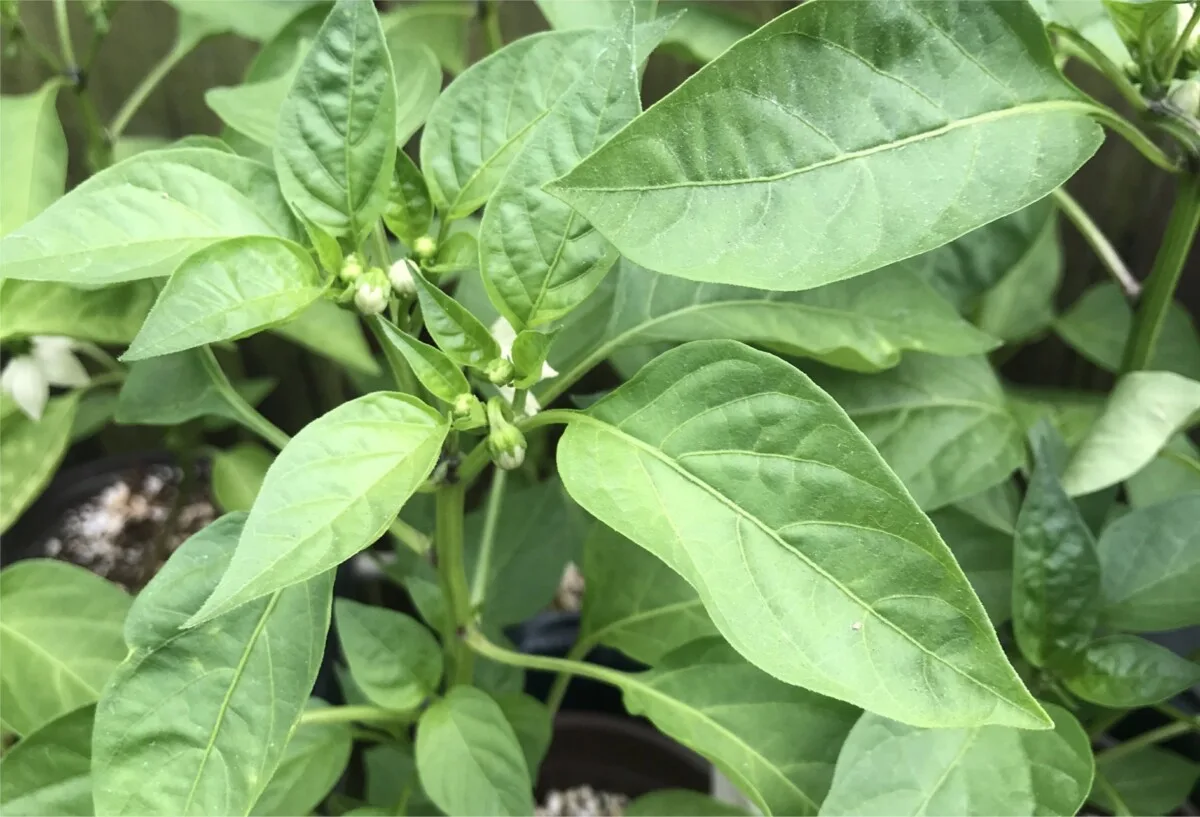
Make the most of good companion plants when planning your garden. Luckily, it’s not difficult to space a few marigolds or oregano plants throughout your garden beds.
The best companion plants for peppers also benefit other garden vegetables, particularly nightshades like tomatoes and eggplant. Many provide double duty as culinary herbs, as well as bringing color and beauty to your vegetable garden.

Get the famous Rural Sprout newsletter delivered to your inbox.
Including Sunday musings from our editor, Tracey, as well as “What’s Up Wednesday” our roundup of what’s in season and new article updates and alerts.


